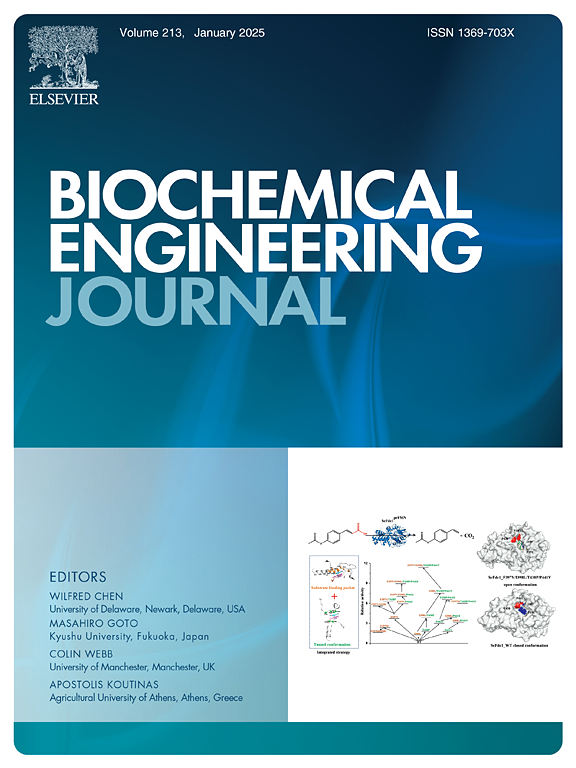渗滤液生物处理系统中微塑料的演化及系统性能的变化
IF 3.7
3区 生物学
Q2 BIOTECHNOLOGY & APPLIED MICROBIOLOGY
引用次数: 0
摘要
本研究系统研究了四种微塑料(聚苯乙烯(PS)、聚乙烯(PE)、聚丙烯(PP)和聚对苯二甲酸乙二醇酯(PET))在好氧和厌氧条件下在渗滤液处理系统中的演变,采用表面形貌表征(SEM)和微生物群落分析(16S rRNA测序)来揭示它们的降解机制和对污染物去除的抑制作用。MPs的存在,特别是PS、PE、PP和PET的存在,显著阻碍了化学需氧量、氨氮和总磷的去除。好氧条件导致初始抑制,而厌氧条件加剧了降解过程,包括表面侵蚀和氧化。四种类型中,PET在相同条件下老化更快、更明显,而PS在有氧条件下老化更快、更显著。好氧条件最初抑制微生物活动,而厌氧条件加剧了这些影响。主要由变形菌门和拟杆菌门组成的微生物群落的变化反映了环境偏好。该研究强调了持续探索这些系统中MPs的演化机制的必要性,以便为实际应用的有效污染控制策略的发展提供信息。这一认识对于减轻MPs对渗滤液处理过程的不利影响和保护环境健康至关重要。本文章由计算机程序翻译,如有差异,请以英文原文为准。
Evolution of microplastics and changes in system performance in leachate biological treatment system
This study systematically investigated the evolution of four microplastics (MPs) (polystyrene (PS), polyethylene (PE), polypropylene (PP), and polyethylene terephthalate (PET)) in leachate treatment systems under aerobic and anaerobic conditions, employing surface morphology characterization (SEM) and microbial community analysis (16S rRNA sequencing) to unravel their degradation mechanisms and inhibitory effects on contaminant removal. The presence of MPs, particularly PS, PE, PP, and PET, significantly impeded the removal of chemical oxygen demand, ammonia nitrogen, and total phosphorus. Aerobic conditions resulted in initial inhibition, whereas anaerobic conditions exacerbated the degradation processes, including surface erosion and oxidation. Among the four types, PET aged more rapidly and visibly under the same conditions, while PS aged more quickly and prominently under aerobic conditions. Aerobic conditions initially suppressed microbial activity, while anaerobic conditions aggravated these effects. Changes in the microbial community, primarily composed of Proteobacteria and Bacteroidetes, reflected environmental preferences. The research emphasized the continuous need to explore MPs' evolution mechanisms within these systems to inform the development of effective pollution control strategies for practical applications. This understanding is crucial for mitigating the adverse effects of MPs on leachate treatment processes and protecting environmental health.
求助全文
通过发布文献求助,成功后即可免费获取论文全文。
去求助
来源期刊

Biochemical Engineering Journal
工程技术-工程:化工
CiteScore
7.10
自引率
5.10%
发文量
380
审稿时长
34 days
期刊介绍:
The Biochemical Engineering Journal aims to promote progress in the crucial chemical engineering aspects of the development of biological processes associated with everything from raw materials preparation to product recovery relevant to industries as diverse as medical/healthcare, industrial biotechnology, and environmental biotechnology.
The Journal welcomes full length original research papers, short communications, and review papers* in the following research fields:
Biocatalysis (enzyme or microbial) and biotransformations, including immobilized biocatalyst preparation and kinetics
Biosensors and Biodevices including biofabrication and novel fuel cell development
Bioseparations including scale-up and protein refolding/renaturation
Environmental Bioengineering including bioconversion, bioremediation, and microbial fuel cells
Bioreactor Systems including characterization, optimization and scale-up
Bioresources and Biorefinery Engineering including biomass conversion, biofuels, bioenergy, and optimization
Industrial Biotechnology including specialty chemicals, platform chemicals and neutraceuticals
Biomaterials and Tissue Engineering including bioartificial organs, cell encapsulation, and controlled release
Cell Culture Engineering (plant, animal or insect cells) including viral vectors, monoclonal antibodies, recombinant proteins, vaccines, and secondary metabolites
Cell Therapies and Stem Cells including pluripotent, mesenchymal and hematopoietic stem cells; immunotherapies; tissue-specific differentiation; and cryopreservation
Metabolic Engineering, Systems and Synthetic Biology including OMICS, bioinformatics, in silico biology, and metabolic flux analysis
Protein Engineering including enzyme engineering and directed evolution.
 求助内容:
求助内容: 应助结果提醒方式:
应助结果提醒方式:


